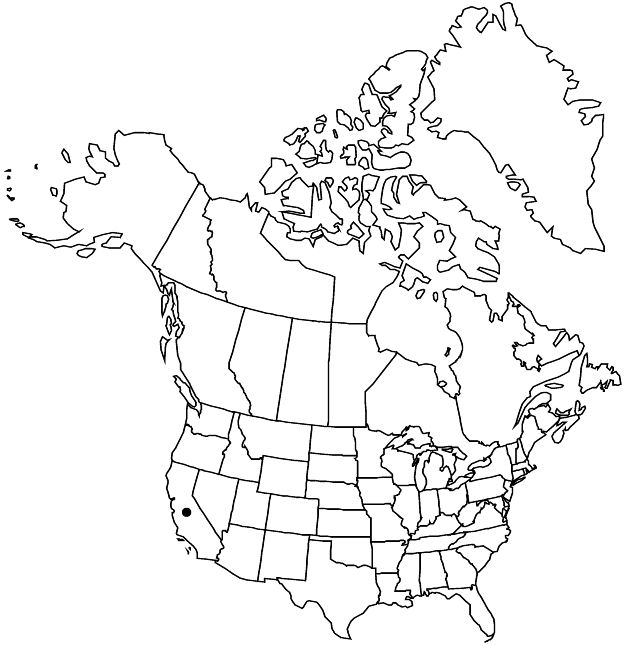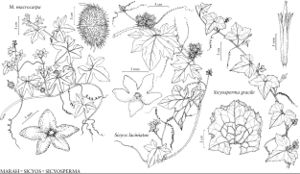Marah macrocarpa
Leafl. Bot. Observ. Crit. 2: 36. 1910.
Leaf-blades deeply 5 (–7) -lobed, 5–30 cm wide. Flowers: sepals (pistillate) deltate, 0.4–0.6 mm, sometimes vestigial; petals (1–) 3–10 (–12) mm (pistillate) or 5–8 (–10) mm (staminate), corolla white, shallowly cupulate to rotate; staminodia scalelike or absent in pistillate flowers. Capsules yellowish green at maturity, short-ellipsoid to broadly ovoid, usually rounded at both ends, sometimes sharply beaked, (5–) 8–12 cm, surface densely echinate, spinules rigid, 5–30 mm. Seeds 4–20 (–24), usually obovate to oblongelliptic, sometimes subglobose, not flat at one end, slightly compressed, 15–20 mm. 2n = 32, 64.
Phenology: Flowering (Jan–)Mar–May.
Habitat: Pinyon-juniper woodlands, Joshua tree-pinyon transition zones, coastal sage, chaparral, oak woodlands, rocky hillsides, riparian woods and thickets, stream bottoms, disturbed sites, roadsides
Elevation: 0–1500(–2100) m
Distribution

Calif., Mexico (Baja California), Mexico (Baja California Sur)
Discussion
K. M. Stocking (1955b) enlarged Marah macrocarpa to include M. micrantha Dunn [as M. macrocarpa var. micrantha (Dunn) Stocking], which is known only from
Cedros Island off the Pacific coast of Baja California, outside of Vizcaíno Bay. But the relatively small flowers and seeds of the latter [staminate flowers 3–6(–8) mm diam. versus 8–13 mm diam.; seeds 12–13 mm versus 15–20 mm] and its apparent geographical disjunction suggest that treatment of M. micrantha at specific rank is justified.
Selected References
None.
Lower Taxa
No values specified.
